
This is the continuation of my Negros travel blog post as I went ahead to the province of Siquijor after my short stop in Dumaguete. I really intended to go here after exploring parts of Negros Occidental and Negros Oriental that’s why after staying overnight in Apo Island, I went to Dumaguete and rode a charter boat going to Siquijor, the province that was once called Isla de Fuego, which means Land of Fire.
Siquijor
Teeming with white sand beaches, perfectly blue waters and amazing waterfalls while also being associated with mystic culture and traditions, Siquijor is more than a land of beauty and mysticism. It is a haven for travelers who want to spend their time really enjoying every minute of their stay. A good friend has told me that the island was once called Isla de Fuego because the place seemed to light up at night due to the number of fireflies present across the land.
Having a land area of 327 sq. km, Siquijor is the 3rd smallest province in the country of the Philippines. This island province is located in the Central Visayas region. Separating it from Cebu (at the north), Negros Oriental (at the west), Bohol (at the northeast) and Mindanao (at the south) is the Bohol Sea. Based on the 2005 national census, Siquijor has a population of 95,984, also the 3rd smallest in the country.
The people of Siquijor are called Siquijudnon. They mainly speak Cebuano, as well as English. They also know how to speak and understand Tagalog, though this was said to be rarely used amongst themselves.
Siquijor’s climate is mainly tropical monsoon climate, which is described as having a dry season that lasts for about 3 months (February to April) and a wet season (May to January). I went here during the first week of August but I experienced a sunny weather all throughout the day.
How to go to Siquijor?
Once you are in Dumaguete (the capital of Negros Oriental), go to Dumaguete Port. From there, ride a boat (P130) going to Siquijor. Locals told me that boat trips as early as 5:30 AM are available. They are available all throughout the day but only until late in the afternoon. So if you don’t plan to stay overnight in Siquijor, make sure you are at the port and book your boat ride back in Dumaguete. But of course, I am highly encouraging you to stay overnight in this very beautiful province.
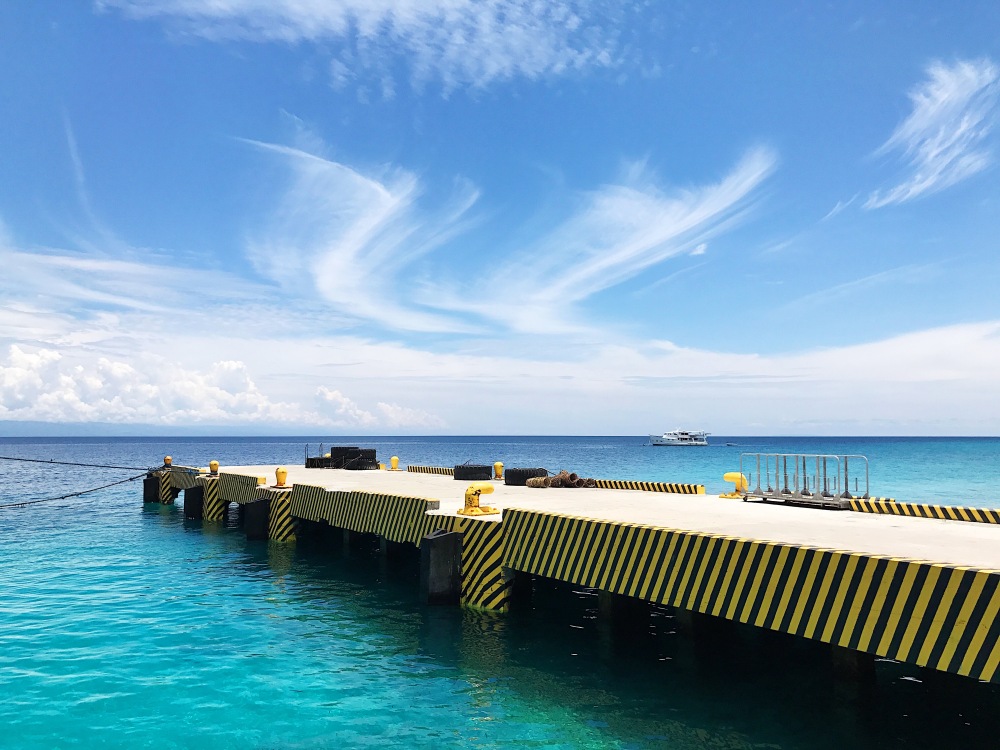
Where to stay in Siquijor?
There are many hotels, lodges or inns in Siquijor. If you intend to witness the sunrise from the island, you ought to find a place in Olang (i.e. Salagdoong Beach) or Lilo-an. As for me, since I wanted to catch the sunset in the island, I told my guide, Kuya Irvin, to bring me in San Juan where we could find a lodge by the beach. As things would have it, I was able to catch the sunset while we were on the road and not by the beach. I opted to choose a lodge that was more affordable even though it isn’t near the beach since I was traveling alone. I stayed in Czar’s Place, a good place for a backpacker. Their rooms are priced at P600, but I was able to haggle and ask if I could pay P500 instead in which they agreed. Aside from that, there are bars near this hostel. One of them is Baha Bar.
Baha Bar (located at Siquijor Circumferential Road, Maite Village, San Juan, Siquijor; they are open from 8 am to 11 pm) not only provides a good place for dining and drinking with their tropical ambiance and chill atmosphere but also a showcase of talents with their reggae live bands and fire dancers.

What to explore in Siquijor?
Since I was traveling alone and I intended to explore the whole island (and eventually make an overnight stay somewhere), I looked for a guide who could drive me around. I met Kuya Irvin (0915-8903286) in the port, and there he showed me the list of fees for the various modes of transportation that travelers can hire while exploring the island. I told him I’d be riding a tricycle since I still have my traveling bag, and also so he could guide me along. The original rate for renting a tricycle is P1000, but when I told him about me going on a solo trip, he’s willing to lower it down to P900. I asked if he could lower it more and he agreed since it was already early in the afternoon.
TIP: If you’re looking for a cool travel guide who can take good pictures of you in the scenic spots of the island, look for Kuya Irvin, guys!
Here are the places that we went to in the beautiful island of Siquijor:
St. Francis de Assisi Church

Also called Siquijor Church, St. Francis de Assisi Church was established by secular priests under St. Francis on February 1, 1783. Its construction started on 1795 and completed on 1831. It is near the Siquijor port so you won’t be able to miss it when you’re about to start or end your tour around the island. A welcome sign is present in one of the gardens in front of the church.
Guiwanon Spring Park
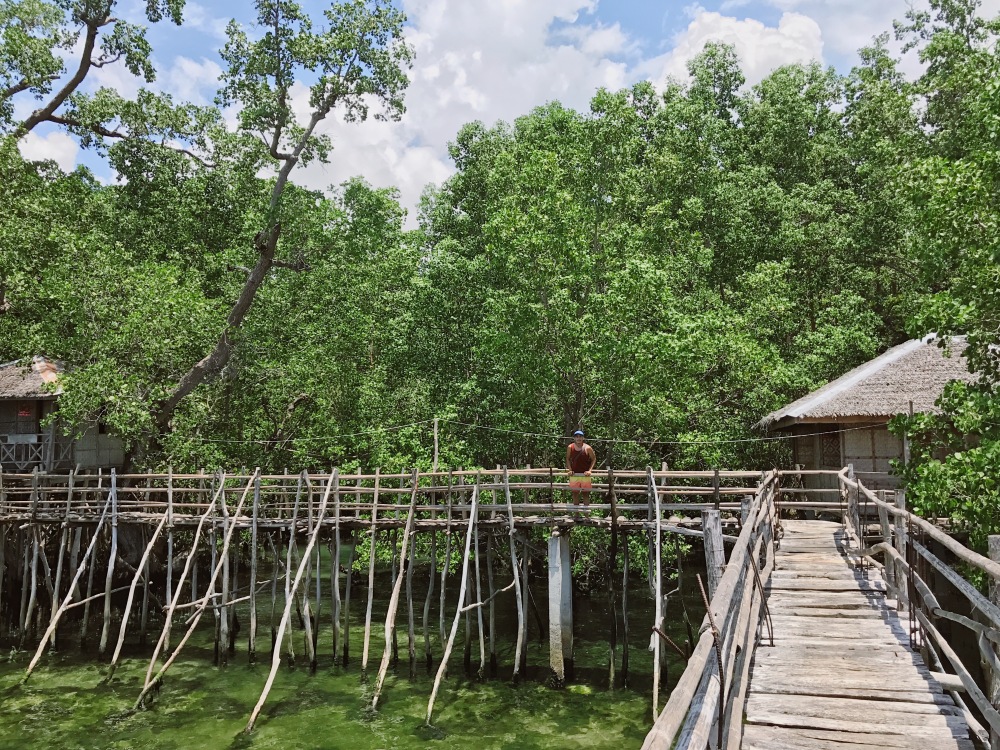
One of the mangrove parks located in Siquijor, Guiwanon Spring Park is located in the town of Larena. It is easy to find as it is found along the Siquijor Provincial Road. After paying P10 in the entrance, tread along its wooden stairs to go to the stilts surrounded by mangroves. Continue to walk along and you’ll see three wooden houses, which can be rented when you are visiting Siquijor. Priced at P250 and P350, these tree houses were could just be the most affordable accommodation in the island. They do have electricity; however, toilets are only available outside.
Guiwanon Spring Park promotes the mangroves as super trees. I’ve always appreciated mangroves, but this appreciation became more apparent while touring this place.
Tulapos Marine Sanctuary
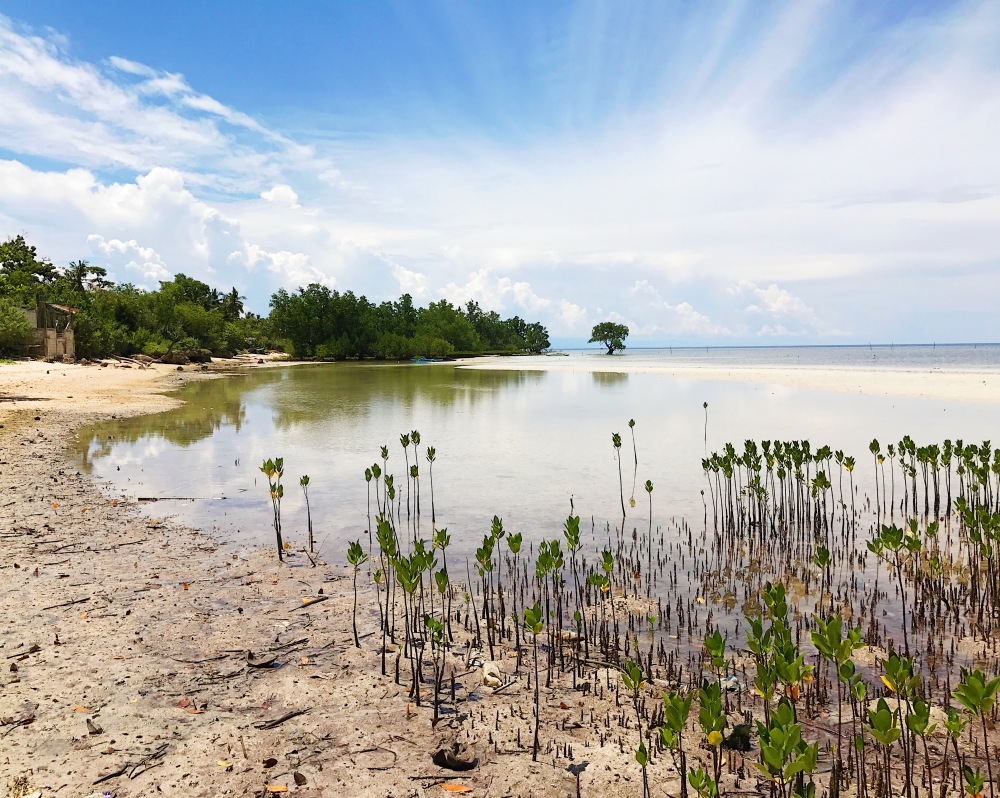
Now, this is where I started to fall in love with Siquijor. Blessed with white beach, this marine sanctuary is bounded by mangroves where different animals thrive. Amimihid or small crabs with a big pincer populate the sand where young mangroves grow. This place may be perfect if you want to have a chill time along the beach, but it is more than that. You can snorkel and dive along its waters to see the beauty of Siquijor underneath. It isn’t populated by many visitors even on a weekend, so if you’re going to ask me where to stay longer in the province, it is here in Tulapos Marine Sanctuary.
Services offered by the marine sanctuary and their fees include:
| Snorkeling | P25 |
| Scuba Diving | P100 |
| Scuba Diving with Still Camera | P150 |
| Scuba Diving with Video | P500 |
| Rental of paddle boat with guide | P250 |
| Rental of double-body boat | P500 |
| Rental of snorkeling gear | P50 |
| Life vest | P50 |
Lilibeth’s Pan Bisaya

A welcome break from touring the island is eating in the small yet getting popular by-the-minute bakery of Lilibeth’s Pan Bisaya. Still located along the Siquijor Provincial Road but this time in the town of Maria, Lilibeth’s Pan Bisaya offers salbaro, tinalay, ensaymada, pandesal ang cakes aside from the province’s native bread. Pan Bisaya, as what my guide told me, is the native bread of Siquijor (and other parts of Visayas) with a sweet coconut filling. I was guessing it’s similar to Tagalog’s pan de coco. And I was correct. However, the difference is that the pan bisaya and the other bread being baked here are not made in an ordinary oven. Beside the store where the breads are displayed is the baking area where the preparing, mixing, kneading and baking of the bread in a makeshift oven happen. Bakers at that time showed me how it’s done. One of them even told me that their bread doesn’t expire easily. Their bread can last up to a week.
Found at the back of the bakery is a stretch of white sand where you can go to and stay in while enjoying your pan de saya.

Salagdoong Beach
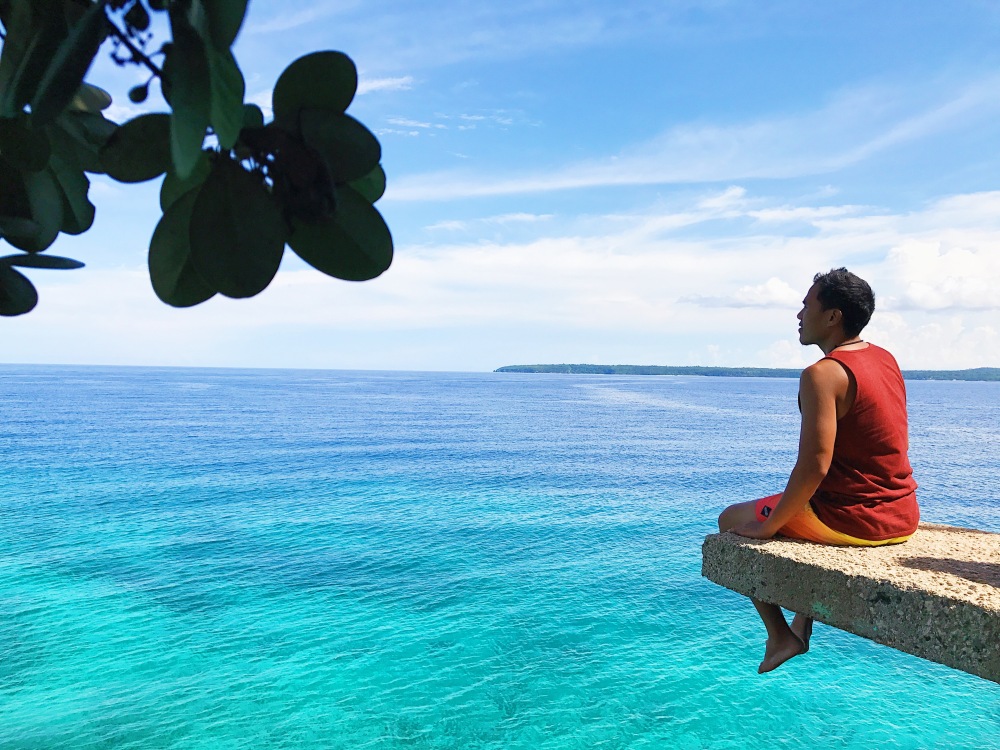
One of the most popular travel destinations in Siquijor, Salagdoong Beach is located in the town of Maria in the northeastern part of the island. While its beaches are fine and white and its waters so blue and inviting– perfect for the beach lovers out there, it is its cliff diving site that it is famous for.
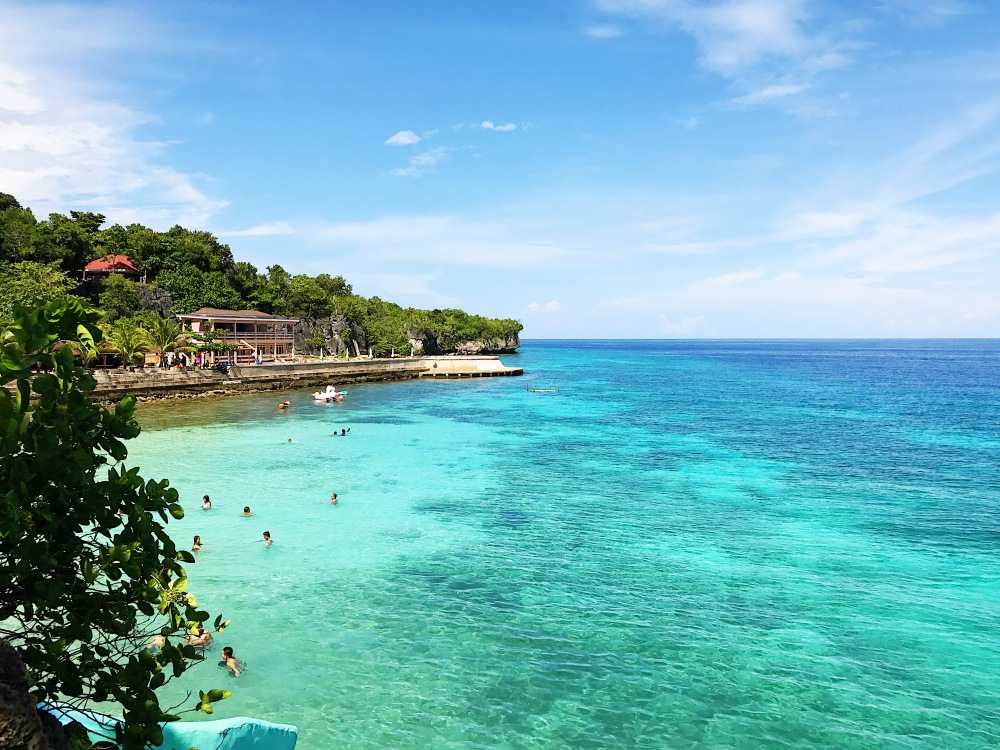
The cliff has two diving platforms, one that is 20 feet high while the other one is 35 feet high. Of course, I won’t go to Siquijor without trying this one! Mustering my courage and praying to God above (hehe), I jumped off the cliff! Don’t worry if you’re afraid to dive in. Ask the resort’s life guard, to assist you when you’re going to jump. There is also life vests that you can rent for P100 just to be really sure that you’re safe.
Kagusuan Beach

One of the beaches in Siquijor that isn’t too crowded even during weekends, Kagusuan Beach sprawls with cream colored sand embedded with pebbles along its shore. Another feature of Kagusuan is the numerous limestone boulders that surround it. While the beach was said to be better looking when it’s high tide, it was a still a beauty when I witnessed it at low tide.
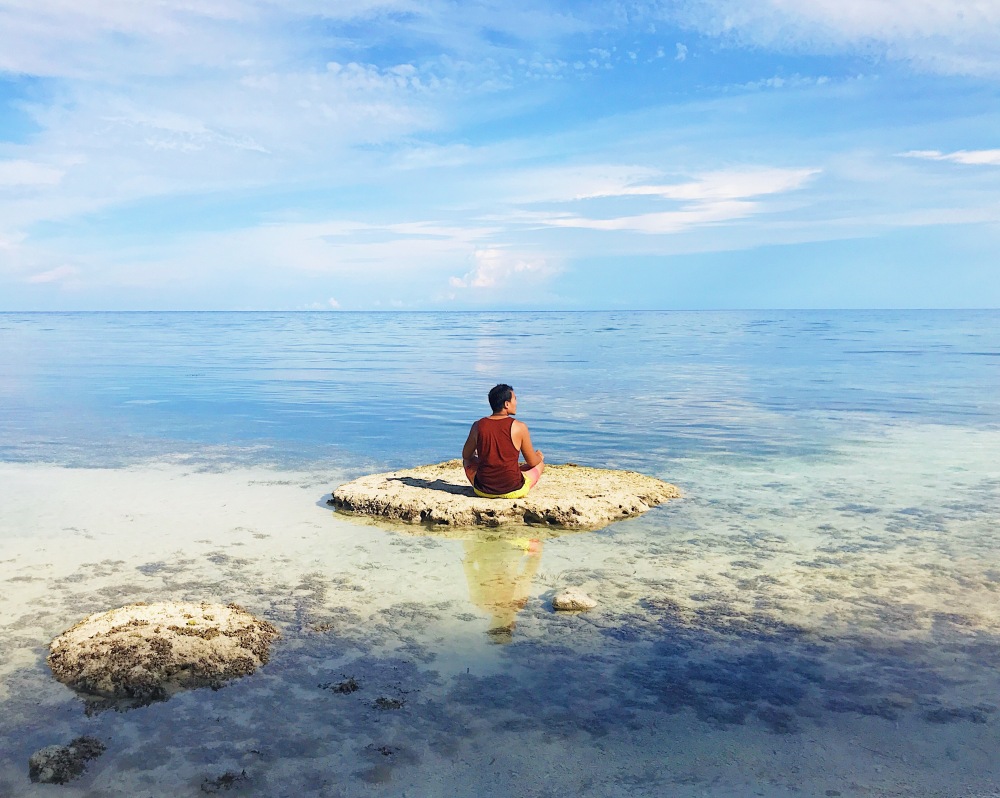
I saw Siquijidnons going to the sea and my guide said that they’re bound to capture sea urchins for food. True enough, I saw women in the beach separating the sea urchins they have caught into two groups: tuyum (black sea urchin) and salwaki (the ordinary sea urchin). They were also removing the sea urchin’s spine to get its flesh. Some were already even eating them raw!
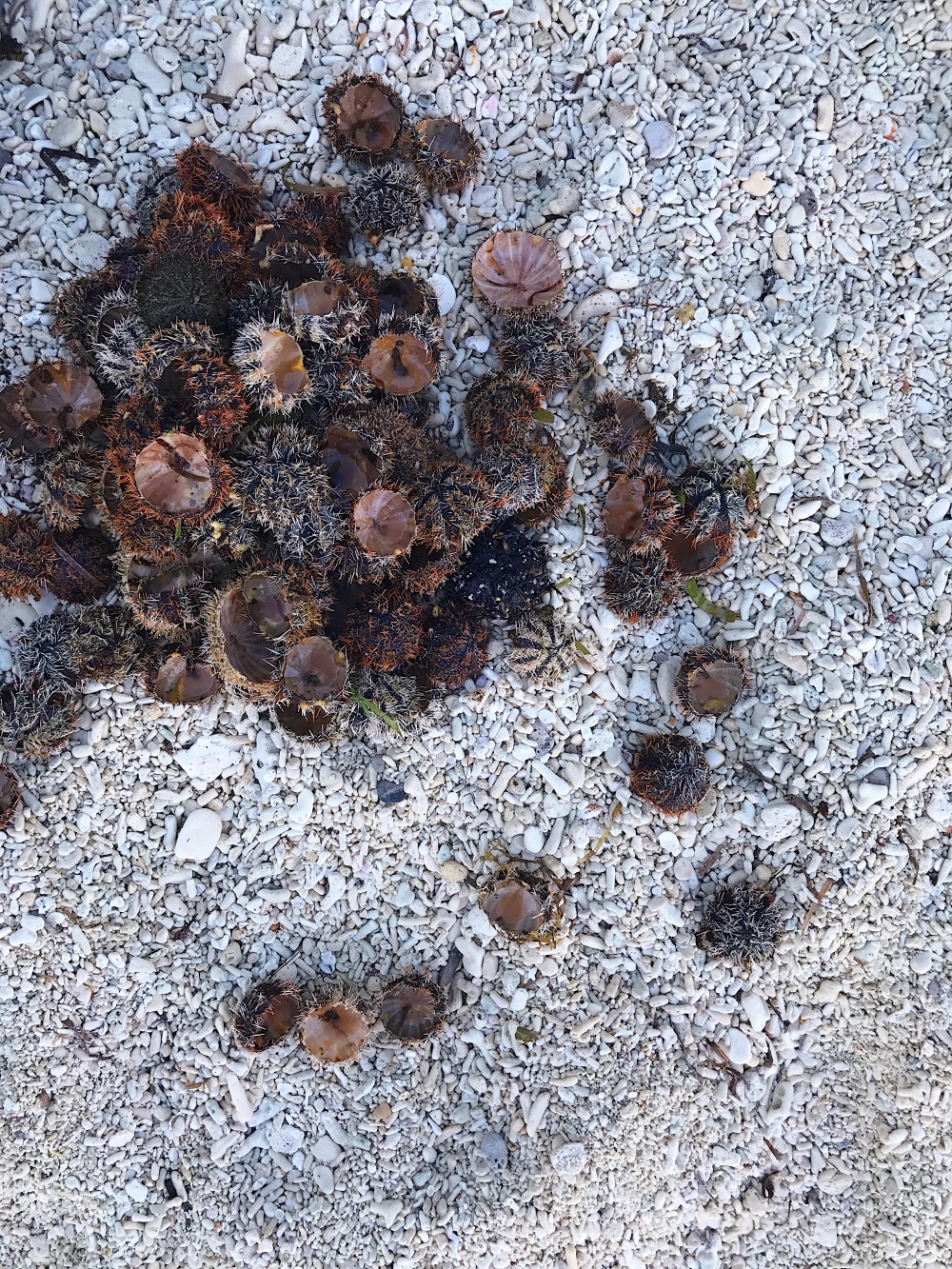
Kagusuan Beach isn’t one of the popular spots in Siquijor but you can suggest to your Siquijidnon guides/drivers to drive you here even though it isn’t easy to go to. There is no entrance fee so that is a plus.

Cambuguhay Falls
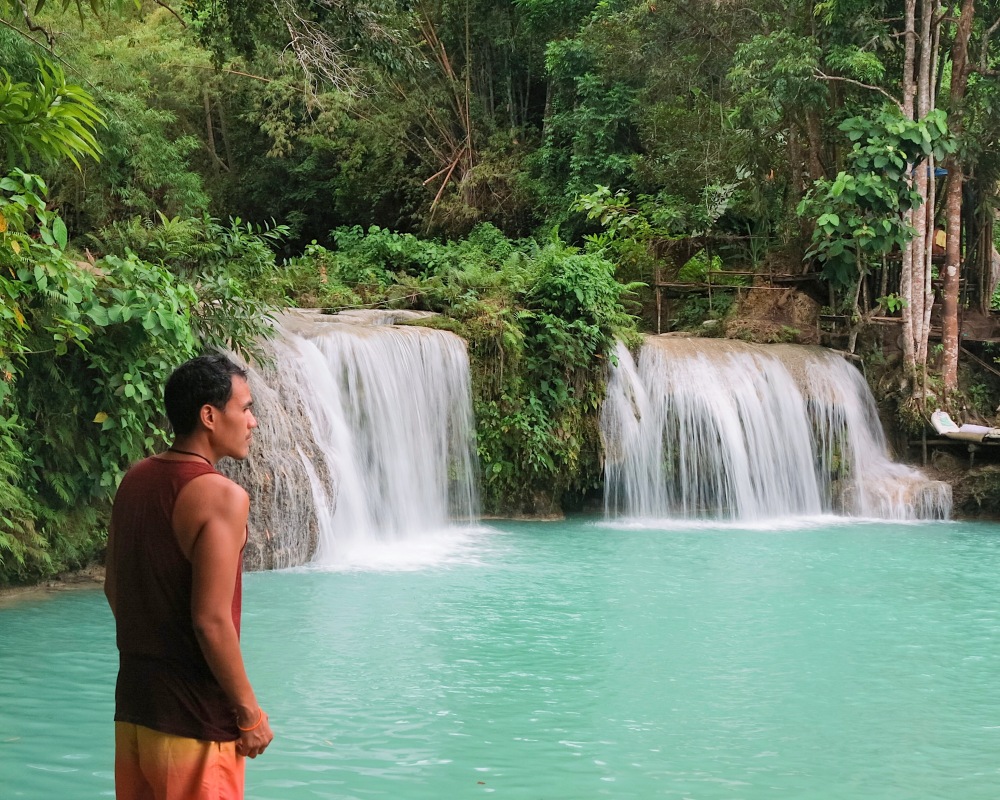
Definitely one of the most famous travel destinations in Siquijor, Cambugahay Falls is said to be the most beautiful waterfalls in the whole province. The other waterfalls in the island, namely Lugnason, Cabugsayan, ,La Gaan, Kawasan and Locong, are said to be beautiful, too, though I wasn’t able to visit them due to time constraints. Hopefully I’ll be able to visit them the next time I go to Siquijor.
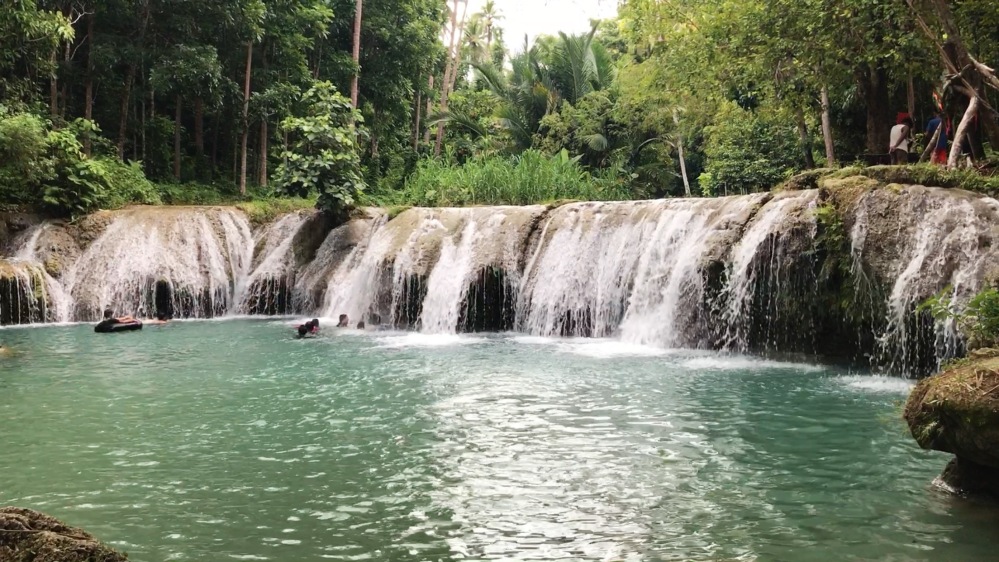
The alluringly beautiful Cambugahay Falls consists of cascading waters in three tiers, the waters of which come from natural springs of the mountains in that part of Lazi, Siquijor. The water from the falls eventually discharges to the Lazi Bay.
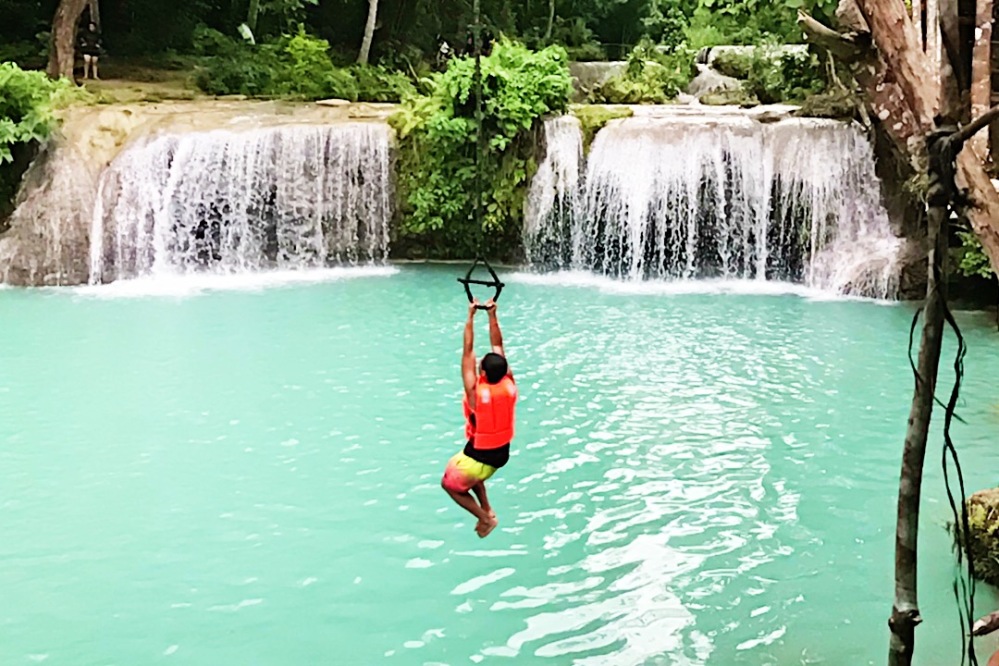
While the sounds made by the falls in its three tiers can be so relaxing, a fun activity being done in two of its falls (first and third) is an exhilarating one. One can opt to jump in the middle of the water pool after swaying in a manmade swing! The use of the manmade swing is charged P20, and if you aren’t too adept in swimming, especially in the first tier where it is said to be about 15 to 20 feet, you can rent a life vest for P100 (though I was able to rent it for P50). Your guide/driver won’t be able to guide you in the falls so you’d be having another guide. There is no standard rate for the guides, so it’s up to you how much you will give. I’d recommend for you to give P50 to P100 to your guide.
Lazi Church and Lazi Convent

Also called San Isidro Labrador Parish, Lazi Church is one of the oldest churches in the country. Built in the year 1884, it is made up of sea stones and hardwood.

The Lazi convent is located in front of the church, and it is considered one of the biggest in the country. Inside the convent is a museum that contains religious artifacts, relics and other antique items.
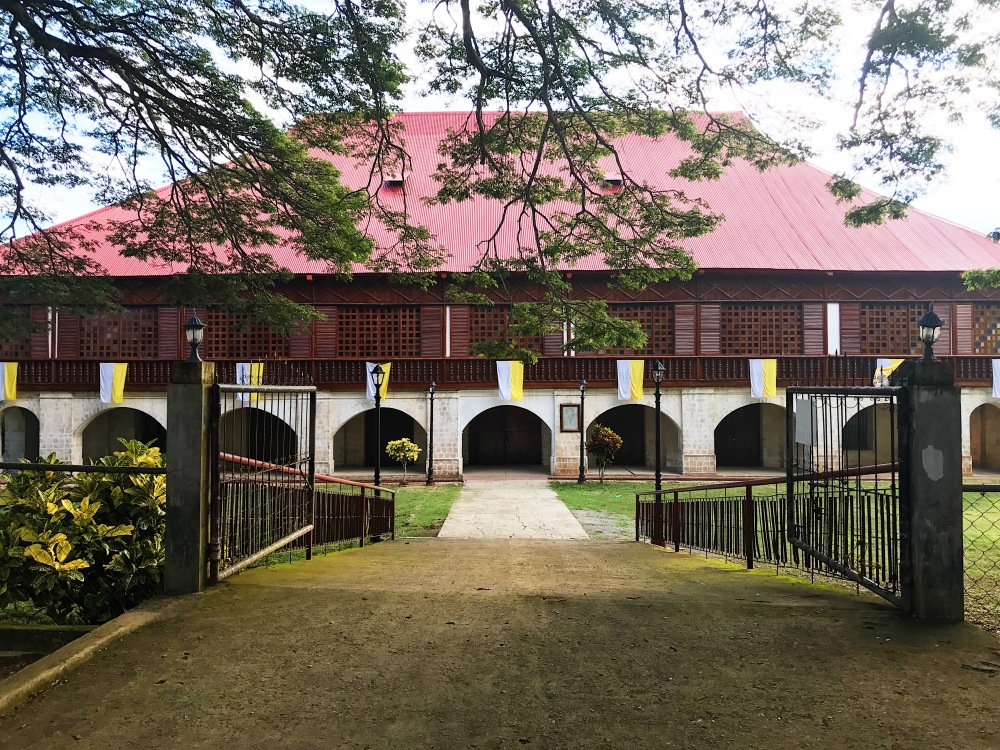
The 400-year-old Balete Tree

One reason why Siquijor is popular among the Filipinos is its mysticism and mystery. One popular destination that probably encapsulates this notion about the province is its 400-year-old balete tree. Said to be the oldest and biggest in the entire province, the balete tree . What’s peculiar about this tree is that there’s a natural spring in its root base, and its waters flow straight into a manmade pool. One can swim in this pool, but if you don’t have the luxury of time, you can just dip your feet into it and wait for fishes to nibble at your toes. Also, there are stores in the vicinity where you can buy your pasalubong!

Admission here is free, though there’s a donation box where you can give money for the maintenance of the place.
Paliton Beach

A private beach in the town of San Juan in Siquijor, Paliton Beach is where the popular Coco Grove Resort is located. Its cream-colored sand is embedded with coconut trees, which is why the resort got its name. Anyway, it is also where the private boats provided by the resort going to Apo Island originate directly from Siquijor.
SIQUIJOR TRAVEL EXPENSES
Now, here’s my travel expenses while I was exploring the province of Siqujor. Please mind that I traveled here solo, which is why the expenses are quite high compared to my other travels. It means, too, that you’ll spend less when you’re exploring the province in a group!
|
SIQUIJOR TRAVEL EXPENSES |
||
| P150 | Boat ride from Dumaguete port to Siquijor port | There are many shipping lines you can choose from in the port. Avoid riding the RORO if you want to travel to the island faster. Here’s a directory of the shipping lines that provide service in Dumaguete and Siquijor ports: http://siquijordirectory.com/ferryshippings/ |
| P850 | Whole day tour using tricycle | The standard price is P1000. However, I was able to lower it down to P850 especially since I started my tour after lunchtime.
You can choose to use a motorcycle when traveling in the island. It is definitely much cheaper. |
| P10 | Guiwanon Spring Park entrance fee | – |
| – | Tulapos Marine Sanctuary | Entrance here is free. Fees will be given should you decide to avail their services. (Look for the list of their activities in What to Explore section.) |
| P80 | Lunch/snacks in Pan Bisaya Bakery | Do not forget to buy also for your guide, okay? |
| P50 | Salagdoon Beach entrance fee | Cliff diving is free. You can opt to use a life jacket when you jump off the cliff for P100. |
| – | Kagusuan Beach | There is no entrance fee here. |
| P170 | Cambugahay Falls | P100- guide fee
P50- life vest P20- use of manmade swing |
| – | The Old Balete Tree | Entrance is free. |
| P300 | Buy pasalubong from Siquijor! | Stores are located near the old balete tree. You can buy here if you don’t have the time anymore to buy somewhere else. |
| P500 | Czar’s Place | Overnight stay in Czar’s place is originally priced at P600. |
| P225 | Dinner in Baha Bar | Their food here is delicious! |
| P200 | Tricycle ride back to Siquijor port | Side trips in Paliton Beach and St. Francis de Assisi Church for free. |
| P35 | Breakfast at the port. | You can buy rice meals, bread, coffee and other beverages in stores present at the Siquijor port. |
| P130 | Boat ride from Siquijor to Dumaguete | Here’s the directory again of the shipping lines serving in Siquijor and Dumaguete ports. |
| Total expenses for a solo traveler having an overnight stay in Siquijor: P2,700. | ||
















Thanks for the tip bro
LikeLiked by 1 person
Will be here anytime this month,
LikeLiked by 1 person
You’re welcome, Jonathan!
LikeLike
Dude! We ordered the same thing in Baha Bar!!! Hahaha freak I miss SIQ!
LikeLiked by 1 person
Oh wow, really? Haha. I really loved it there! 😀
LikeLiked by 1 person
Can’t blame you. SIQ is a stunner….one of the most beautiful underrated place I’ve been to..
LikeLike